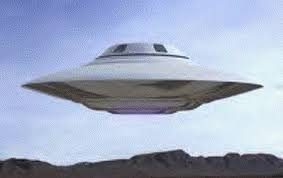An unidentified flying object, or UFO, in its most general definition, is any apparent anomaly in the sky (or near or on the ground, but observed hovering, landing, or departing into the sky) that is not readily identifiable as any known object or phenomenon by visual observation and/or use of associated instrumentation such as radar. These anomalies were referred to popularly as "flying saucers" or "flying discs" during the late 1940s and early 1950s.
The term "UFO" (or "UFOB") was officially created in 1953 by the United States Air Force (USAF) to replace the more popular terms because of the variety of shapes described other than "discs" or "saucers." It was stated that a "UFOB" was "any airborne object which by performance, aerodynamic characteristics, or unusual features, does not conform to any presently known aircraft or missile type, or which cannot be positively identified as a familiar object." As originally defined, the term was restricted to those fraction of cases which remained unidentified after investigation, with USAF interest being for potential national security reasons and/or "technical aspects." (See Air Force Regulation 200-2.) The term UFO became more widespread during the 1950s, at first in professional literature, but later in popular use. UFOs garnered considerable interest during the Cold War, an era associated with a heightened concern for national security.
Various studies have concluded that the phenomenon does not represent a threat to national security nor does it contain anything worthy of scientific pursuit (e.g., 1953 CIA Robertson Panel, USAF Project Blue Book, Condon Committee). Culturally, the phenomenon has often been associated with extraterrestrial life or government-related conspiracy theories, and has become a popular theme in fiction.
The term "UFO" (or "UFOB") was officially created in 1953 by the United States Air Force (USAF) to replace the more popular terms because of the variety of shapes described other than "discs" or "saucers." It was stated that a "UFOB" was "any airborne object which by performance, aerodynamic characteristics, or unusual features, does not conform to any presently known aircraft or missile type, or which cannot be positively identified as a familiar object." As originally defined, the term was restricted to those fraction of cases which remained unidentified after investigation, with USAF interest being for potential national security reasons and/or "technical aspects." (See Air Force Regulation 200-2.) The term UFO became more widespread during the 1950s, at first in professional literature, but later in popular use. UFOs garnered considerable interest during the Cold War, an era associated with a heightened concern for national security.
Various studies have concluded that the phenomenon does not represent a threat to national security nor does it contain anything worthy of scientific pursuit (e.g., 1953 CIA Robertson Panel, USAF Project Blue Book, Condon Committee). Culturally, the phenomenon has often been associated with extraterrestrial life or government-related conspiracy theories, and has become a popular theme in fiction.
0 comments:
Post a Comment